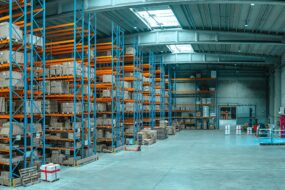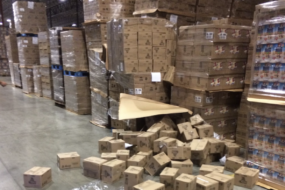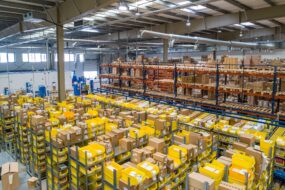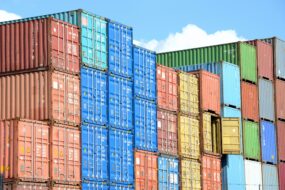Contents
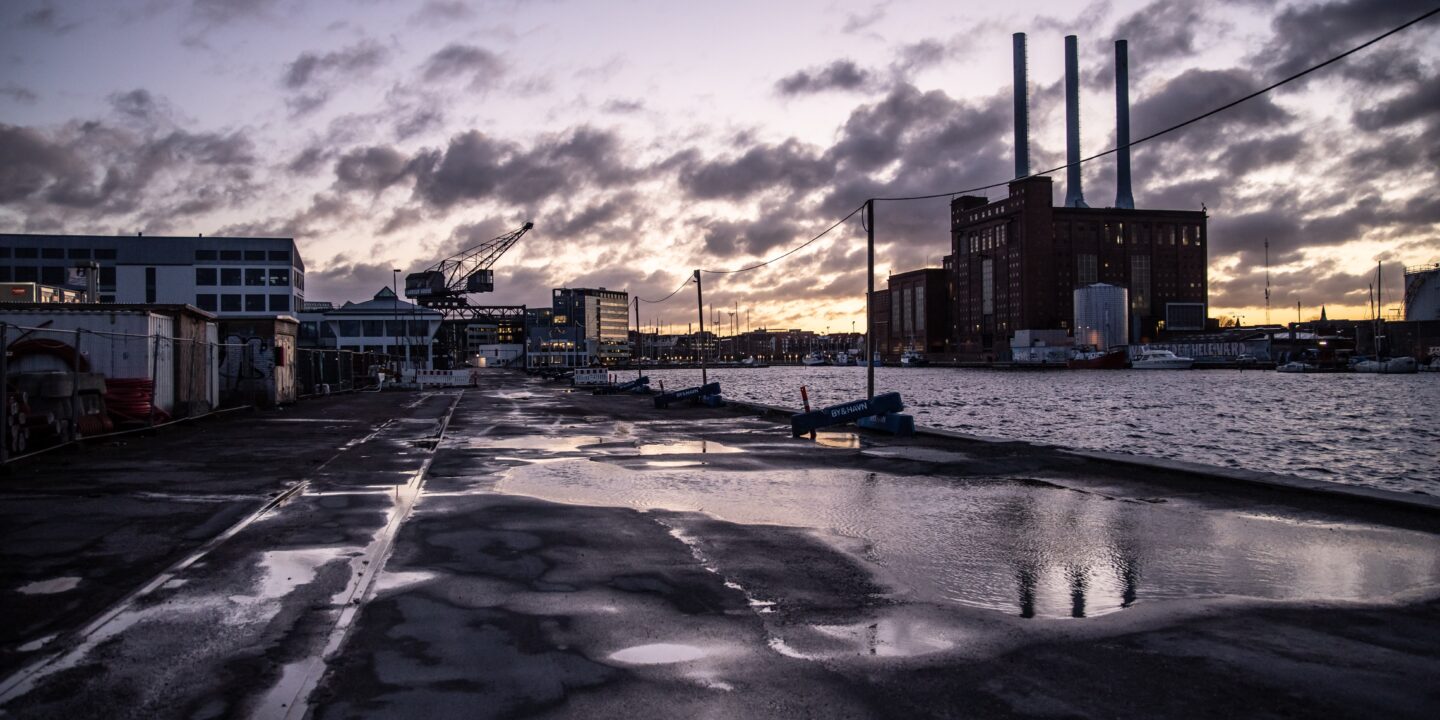
Free Trade Zones (Free Trade Zones), also known as free-trade areas or special economic zones, are designated areas around the world where goods can be stored, manufactured, and even re-exported without the intervention of the customs authorities applying duties and tariffs. Free-Trade-Zone warehousing specifically refers to the storage facilities within these zones, playing a crucial role in facilitating international trade.
The Concept of Free Trade Zones
Free Trade Zones have been a part of the global trading system since the 20th century. In the United States, they are commonly referred to as Foreign Trade Zones and were created in response to the failed attempt to stimulate american jobs from the Smoot–Hawley Tariff Act in 1930. This act created protectionist trade policies and the Foreign or Free Trade Zone was created to reverse some of the damaging effects.
These main concept of these zones are primarily designed to facilitate trade by reducing barriers such as import duties and customs regulations. The main objective is to foster economic activity, promote exports, and create employment opportunities.
The Benefits of Free Trade Zone Warehousing
The appeal of Free Trade Zones lies in the multitude of benefits it offers. First and foremost, it provides opportunities for duty deferral, reduction, and even elimination. When goods are imported into a Free Trade Zone, customs duties can be deferred until the goods enter the domestic market. If the goods are re-exported, no duties are paid. This can significantly lower the cost of doing business and give companies a competitive edge in the global market.
Some of the other benefits include:
- Improved Cash Flow
- Streamlined Customs Procedures
- Enhanced Inventory Management
- Flexibility in Manufacturing and Assembly
- Trade Facilitation
- Access to Foreign Markets
Setting Up a Free Trade Zone Warehouse
Setting up a Free Trade Zone involves understanding and complying with numerous regulations and requirements. The process typically involves submitting a proposal to the governing body overseeing Free Trade Zones, usually a country’s customs and border protection agency. This proposal must detail how the warehouse will operate, the types of goods it will handle, and how it will comply with regulations.
- Feasibility Study: Conduct a thorough study to understand the potential benefits and challenges of setting up a free trade zone. This includes considering the economic, environmental, and social impacts it might have.
- Stakeholder Engagement: Engage with all relevant stakeholders, including government bodies, private sector entities, local communities, and international organizations. Their support will be crucial for the success of the Free Trade Zone.
- Policy Formulation: Develop a clear policy framework for the Free Trade Zone. This should include details on the regulatory environment, customs procedures, tax incentives, and other policies that will govern the Free Trade Zone.
- Negotiation: If the Free Trade Zone involves multiple countries, negotiations will be necessary to agree on the terms of the agreement. These negotiations can be complex and time-consuming, requiring careful diplomacy and negotiation skills.
- Legislation: Pass the necessary laws and regulations to establish the Free Trade Zone. This might include changes to customs laws, tax laws, and other relevant legislation.
- Infrastructure Development: Develop the necessary infrastructure for the Free Trade Zone. This might include ports, roads, warehouses, office buildings, and other facilities.
- Marketing and Promotion: Promote the Free Trade Zone to potential investors and businesses. This might involve marketing campaigns, trade shows, and other promotional activities.\
- Implementation and Monitoring: Once the Free Trade Zone is established, it will need to be managed and monitored to ensure it is functioning as intended. This includes overseeing the operations of businesses within the Free Trade Zone, ensuring compliance with regulations, and assessing the impact of the Free Trade Zone on the local economy and environment.
- Continuous Evaluation and Improvement: Regularly review and assess the performance of the Free Trade Zone. Based on these assessments, make necessary adjustments to policies and operations to ensure the Free Trade Zone continues to meet its objectives.
- Dispute Resolution Mechanisms: Have in place clear and fair mechanisms for resolving any disputes that may arise within the Free Trade Zone.
Key Considerations When Choosing an Free Trade Zone Warehouse
When selecting an Free Trade Zone warehouse, several factors should be considered. The location of the warehouse is of paramount importance. It should be strategically located near major transportation hubs such as a maritime port or airport for efficient movement of goods.
The size and capacity of the warehouse are also crucial. It should be able to accommodate your inventory needs and have the potential for expansion. Security measures are another critical factor, given the high value of goods that are typically stored in these warehouses, which could lead the facility illegally bypassing the sovereign country’s customs authorities.
Challenges and Solutions of Free Trade Zone Warehousing
Despite its numerous benefits, Free Trade Zone warehousing also comes with potential risks and challenges. These can include complex regulatory requirements, the risk of goods being seized for non-compliance, and potential reputational risks if goods are associated with illicit activities.
However, these challenges can be mitigated through best practices such as thorough understanding of Free Trade Zone regulations, robust compliance procedures, effective risk management strategies, and regular audits.
Case Studies: Successful Free Trade Zone Warehousing
Many companies have successfully leveraged Free Trade Zone warehousing for cost efficiency and operational effectiveness. Below are 2 examples.
- Samsung Electronics in Vietnam: In the early 2000s, Samsung Electronics decided to build a factory in the Yen Phong Industrial Park, a free trade zone in Bac Ninh Province, Vietnam. The decision was driven by several advantages offered by the free trade zone, including tax incentives, cheap labor, and relaxed import/export restrictions. Over time, Samsung has been able to significantly reduce manufacturing costs, which has contributed to its competitive edge in the global electronics market. Moreover, the company has been able to quickly import necessary components and export finished products, thanks to the simplified customs procedures in the free trade zone. As of my knowledge cutoff in 2021, Samsung’s Vietnam operations accounted for a substantial portion of its global smartphone production.
- Tesla in Nevada: Tesla’s Gigafactory in Nevada, located in a designated Free Trade Zone, is another good example. Free Trade Zone status allows Tesla to import foreign-sourced parts duty-free, subject to certain conditions. This has significant cost benefits for Tesla, given that some components of its electric vehicles, such as lithium-ion batteries, are made from raw materials not widely available in the U.S. Furthermore, the Free Trade Zone also allows Tesla to reduce its inventory-carrying costs, as customs duties are not paid until the goods leave the zone.
Future Trends in Free Trade Zone Warehousing
Looking ahead, technology is expected to have a profound impact on Free Trade Zone warehousing. Innovations such as automation, artificial intelligence, and the Internet of Things (IoT) will likely streamline warehousing operations, enhance inventory management, and improve supply chain transparency.
Sustainability is another key trend shaping the future of Free Trade Zone warehousing. As businesses worldwide strive to reduce their environmental impact, sustainable practices like energy-efficient warehousing, waste management, and responsible sourcing will become increasingly vital.

